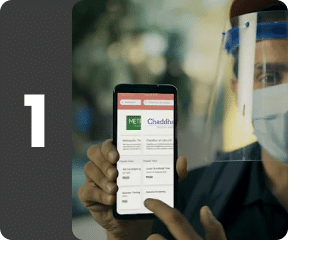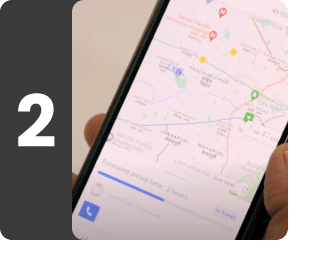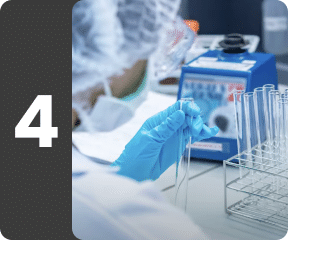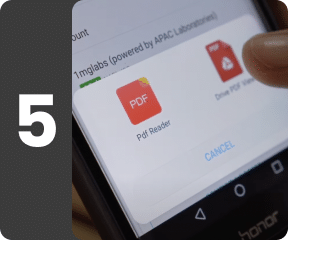FBS (Fasting Blood Sugar)
Understanding FBS (Fasting Blood Sugar)
What is FBS (Fasting Blood Sugar)?
The FBS (Fasting Blood Sugar) test measures the glucose (sugar) level in the blood after overnight fasting. This test is done when a person experiences symptoms of high or low blood sugar levels or to assess a person’s risk for diabetes. It is often done as part of a routine health checkup.
Glucose is the primary energy source for the body. Carbohydrates in the food are broken down into glucose, which is then absorbed into the bloodstream and transported to the cells for energy. Insulin, produced by the pancreas, regulates the blood glucose level in the body. A lack of insulin or its reduced effectiveness can result in high blood glucose levels.
High blood glucose levels can be a sign of diabetes or prediabetes (a condition where a person has high blood glucose levels but not yet at a level that qualifies as diabetes). Early detection and treatment of diabetes are essential to prevent complications such as heart disease, kidney damage, and nerve damage. An FBS test helps screen for prediabetes and diabetes and checks the effectiveness of medications or lifestyle changes for diagnosed people.
Fasting for at least 8-12 hours is recommended before undergoing the FBS (Fasting Blood Sugar) test. Do not eat or drink anything other than water during the fasting period. It is also important to inform the doctor about any medicines being taken, as some of them may affect the blood glucose levels and need to be adjusted or temporarily discontinued before the test.
Test result ranges may vary across the laboratories depending on the methodology and laboratory guidelines. Do not self-medicate, and always consult your doctor to understand your test results.The results will help them understand your condition, suggest lifestyle changes like diet and exercise, decide if you need medication, and create a treatment plan.
Lifestyle Tips to Manage Your Blood Glucose Levels:
🥤Hydration: Stay hydrated! Drinking enough water supports overall health and helps maintain stable blood sugar levels.
🥙Eat (Diet): Focus on a balanced diet rich in fiber, lean proteins, and healthy fats. Include whole grains, vegetables, nuts, and seeds to help manage blood sugar.
🚴♀️Activity (Exercise): Regular physical activity like walking, cycling, or strength training can help manage a healthy body weight and lower elevated FBS levels.
😴Lifestyle (Sleep): Get enough quality sleep to help regulate blood sugar levels.
👨⚕️Talk to Your Doctor (Consult): Regularly consult your doctor to understand your FBS test results and adjust your diabetes management plan if needed.
💊Habits (Supplements): Consider supplements like magnesium, chromium, etc. (if advised by your doctor) to support healthy blood sugar levels.
What is FBS (Fasting Blood Sugar) used for?
The FBS (Fasting Blood Sugar) test is done:
A. As General Screening (American Diabetes Association (ADA) Recommendations, 2025)
- All adults ≽ 35 years
- Under 35 with risk factors -
- Overweight/obesity
- Family history of diabetes
- High blood pressure (BP), cholesterol, and heart disease
- Sedentary lifestyle
- History of gestational diabetes or polycystic ovary syndrome (PCOS)
B. If You Have Symptoms
- Frequent thirst, urination, or extreme hunger
- Unexplained weight loss, fatigue, or blurred vision
- Slow-healing wounds or frequent infections
C. High-Risk Groups (Monitoring)
- Prediabetes (FBS 100-125 mg/dL ) - Test every 1–2 years
- Diabetes (FBS≥ 126 mg/dL) - Test every 3-6 months for management
- Individuals with HIV (before starting, when switching, and 3–6 months after antiviral therapy, then annually if FBS results are normal)
- Women with gestational diabetes mellitus (GDM) - Test every 3 years
What does FBS (Fasting Blood Sugar) measure?
The FBS (Fasting Blood Sugar) test measures the glucose level in the body under overnight fasting conditions. Glucose serves as the body's energy currency and is broken down through metabolism to produce energy. Hormones and enzymes produced by the liver and pancreas control this process. The hormone insulin, produced by the pancreas, regulates blood glucose levels. When these levels are high, such as after a meal, insulin is secreted to transport glucose into cells for energy production. Elevated glucose levels in the body after fasting may indicate a risk of developing prediabetes or diabetes, which can be of two types- Type 1, caused by little or no insulin production, and Type 2, caused by insulin resistance or decreased insulin production.
Interpreting FBS (Fasting Blood Sugar) results
Interpretations
Normal fasting glucose range: 70 to 99 mg/dL (3.9 to 5.5mmol/L)
Prediabetes: 99 to 126 mg/dL (5.5mmol/L to 7.0mmol/L)
Diabetes: Higher than 126 mg/dL (7.0mmol/L) in multiple subsequent tests
Answers to Patient Concerns & Frequently Asked Questions (FAQs) about FBS (Fasting Blood Sugar)
Frequently Asked Questions about FBS (Fasting Blood Sugar)
Q. What is the Fasting Blood Sugar test?
Q. Why is an FBS test important?
Q. How do I prepare for an FBS test?
Q. What are the risks associated with an FBS test?
Q. Can I take the Fasting Blood Glucose test during pregnancy?
Q. What is hypoglycemia?
Q. What are the symptoms of hypoglycemia?
Q. What is hyperglycemia?
Q. What are the symptoms of hyperglycemia?
Q. What are the risk factors for diabetes?
Q. Can factors other than hormones and diet affect my blood sugar levels?
Q. What are the common complications of diabetes?
Q. What other tests can be prescribed by the doctor in case the result of the Fasting Blood Sugar test is not normal?
Q. What is the price of the FBS (Fasting Blood Sugar) test?
Q. How can I control diabetes?
Q. What does type 2 diabetes mean?
Q. What should a diabetic patient do to manage their condition?
Q. What is prediabetes, and how can it be managed?
Book a FBS (Fasting Blood Sugar) test at home near me





Other tests









